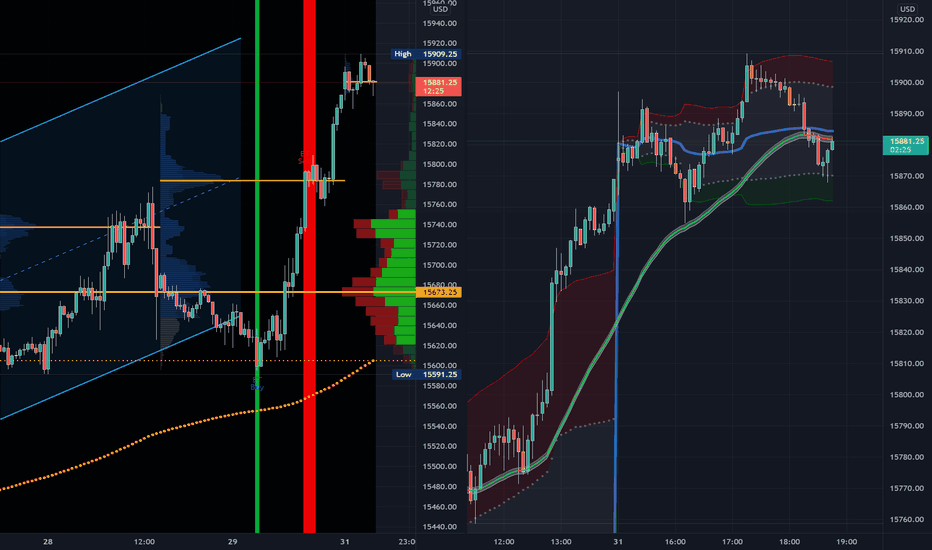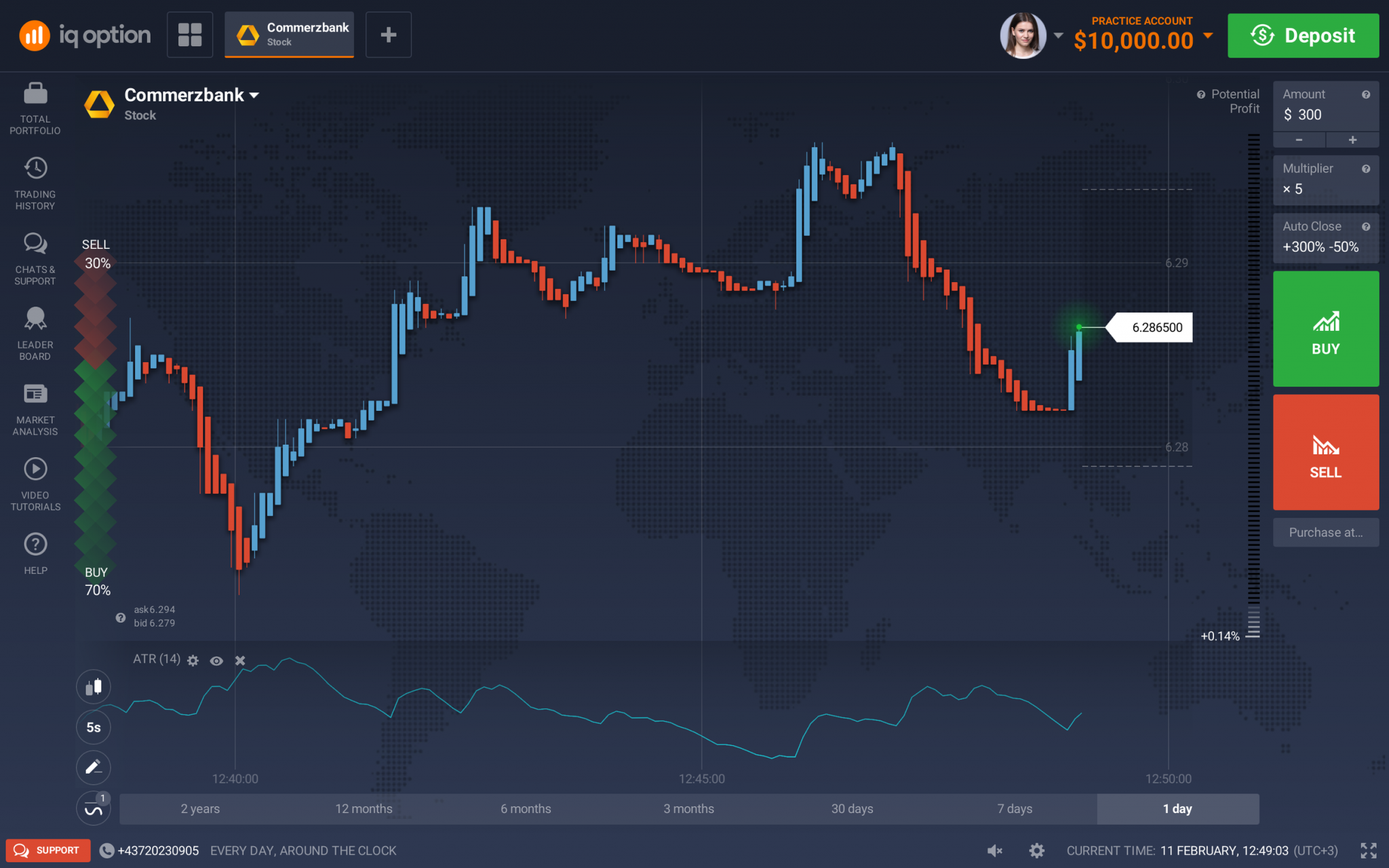Mastering The TradingView Chart: A Complete Information To Customization And Technique
Mastering the TradingView Chart: A Complete Information to Customization and Technique
Associated Articles: Mastering the TradingView Chart: A Complete Information to Customization and Technique
Introduction
With nice pleasure, we are going to discover the intriguing subject associated to Mastering the TradingView Chart: A Complete Information to Customization and Technique. Let’s weave fascinating info and supply recent views to the readers.
Desk of Content material
Mastering the TradingView Chart: A Complete Information to Customization and Technique

TradingView has change into the de facto customary charting platform for merchants and traders worldwide, providing a strong and versatile toolset for analyzing markets and creating buying and selling methods. Nevertheless, its intensive options could be overwhelming for newcomers. This complete information will stroll you thru establishing your TradingView chart successfully, overlaying every part from fundamental customization to superior methods, enabling you to create a workspace tailor-made exactly to your wants.
I. Understanding the TradingView Interface:
Earlier than diving into customization, it is essential to understand the essential format. Upon logging in, you may encounter a clear interface that includes:
- Chart Space: The first house displaying the worth chart. That is the place you may add indicators, draw instruments, and analyze worth motion.
- Image Search Bar: Situated on the prime left, this lets you search and choose the asset you wish to chart (e.g., AAPL, BTCUSD, EURUSD).
- Timeframe Selector: Permits you to change between completely different timeframes (e.g., 1-minute, 5-minute, day by day, weekly). Selecting the suitable timeframe is essential for various buying and selling types.
- Indicator Panel: This panel, usually situated to the left, homes an enormous library of technical indicators. You may add, take away, and customise these indicators to fit your evaluation.
- Drawing Instruments Panel: This panel, usually adjoining to the indicator panel, gives a variety of drawing instruments for figuring out patterns, help/resistance ranges, and trendlines.
- Properties Panel: This panel, often situated on the proper, means that you can customise the looks and settings of the chart, indicators, and drawing instruments.
II. Setting Up Your Primary Chart:
-
Image Choice: Start by coming into the image of the asset you wish to analyze within the search bar. TradingView helps a variety of property, together with shares, cryptocurrencies, foreign exchange pairs, futures, and indices.
-
Timeframe Choice: Select a timeframe applicable on your buying and selling model. Day merchants may choose 1-minute or 5-minute charts, whereas swing merchants may use day by day or weekly charts. Experiment to seek out what works finest for you.
-
Chart Kind Choice: TradingView gives numerous chart varieties, together with candlestick, bar, line, Heikin Ashi, and Renko. Candlestick charts are the most well-liked alternative, offering detailed details about worth actions. Experiment with completely different chart varieties to see which most closely fits your visible preferences and analytical wants.
-
Theme Choice: TradingView gives a number of pre-built themes, starting from gentle to darkish modes. Select a theme that minimizes eye pressure and enhances readability. You can too customise themes extensively.
III. Including and Customizing Indicators:
Indicators are important instruments for technical evaluation. TradingView gives a whole bunch of indicators, categorized by sort (oscillators, development indicators, quantity indicators, and so on.).
-
Indicator Choice: Navigate to the indicator panel and seek for the indications you wish to add. Common selections embody transferring averages (MA), Relative Energy Index (RSI), MACD, Bollinger Bands, and Stochastic Oscillator.
-
Indicator Customization: As soon as an indicator is added, click on on its settings within the properties panel. You may customise numerous parameters, corresponding to:
- Interval: The size of the calculation interval (e.g., 20-period MA, 14-period RSI).
- Kind: Several types of transferring averages (easy, exponential, weighted) or variations of different indicators.
- Colour: Change the colour of the indicator strains and fills for higher visible distinction.
- Type: Modify line thickness, model (stable, dotted, dashed), and different visible parts.
-
A number of Indicator Mixture: Do not be afraid to experiment with a number of indicators. Combining completely different indicators can present a extra complete view of the market. Nevertheless, keep away from overloading your chart with too many indicators, which may result in confusion.
IV. Using Drawing Instruments:
Drawing instruments are essential for figuring out patterns, help and resistance ranges, and trendlines. TradingView gives a wide selection of drawing instruments, together with:
- Trendlines: Join important worth factors to establish the general development.
- Horizontal Traces: Mark help and resistance ranges.
- Fibonacci Retracements: Establish potential reversal factors based mostly on Fibonacci ratios.
- Fibonacci Extensions: Mission potential worth targets based mostly on Fibonacci ratios.
- Gann Traces: Analyze worth actions based mostly on Gann angles.
- Rectangles, Channels, and different shapes: Spotlight particular worth patterns.
Mastering these instruments takes observe. Experiment with completely different instruments to grasp their functionalities and the way they will improve your evaluation.
V. Superior Chart Customization:
-
Alert Creation: TradingView means that you can arrange alerts based mostly on numerous circumstances, corresponding to worth crossing a particular stage, an indicator reaching a sure worth, or a particular candlestick sample forming. That is essential for receiving well timed notifications about potential buying and selling alternatives.
-
Pine Scripting: For superior customers, Pine Script means that you can create customized indicators and methods. This highly effective scripting language opens up a world of potentialities for tailoring your chart to your particular wants and creating subtle buying and selling methods.
-
Format Customization: TradingView means that you can customise the format of your chart, together with the place and dimension of the indicator and drawing instruments panels. Modify the format to optimize your workflow and maximize display screen actual property.
-
A number of Chart Layouts: You may create a number of charts and organize them in a format that most accurately fits your evaluation. That is significantly helpful for evaluating completely different property or timeframes.
VI. Finest Practices for Chart Setup:
- Maintain it Easy: Keep away from cluttering your chart with too many indicators and drawing instruments. Give attention to just a few key indicators and instruments that present essentially the most worthwhile info.
- Consistency is Key: Use the identical indicators and settings constantly throughout completely different property and timeframes to take care of consistency in your evaluation.
- Backtesting: Use TradingView’s backtesting capabilities to check your methods and indicators on historic knowledge.
- Common Evaluation: Often evaluation your chart setup and make changes as wanted to optimize your workflow and enhance your buying and selling efficiency.
- Be taught Pine Script: Investing time in studying Pine Script will considerably broaden your charting capabilities and mean you can create personalized indicators and methods.
VII. Conclusion:
Mastering the TradingView chart is a journey, not a vacation spot. By understanding the interface, customizing your indicators and drawing instruments, and exploring superior options, you’ll be able to create a strong and environment friendly workspace tailor-made to your particular buying and selling model and analytical wants. Bear in mind to experiment, be taught out of your errors, and constantly refine your chart setup to maximise your buying and selling efficiency. The pliability and energy of TradingView enable for countless customization; the secret is discovering the stability between complete evaluation and a transparent, uncluttered chart that enhances, somewhat than hinders, your decision-making course of.








Closure
Thus, we hope this text has supplied worthwhile insights into Mastering the TradingView Chart: A Complete Information to Customization and Technique. We admire your consideration to our article. See you in our subsequent article!